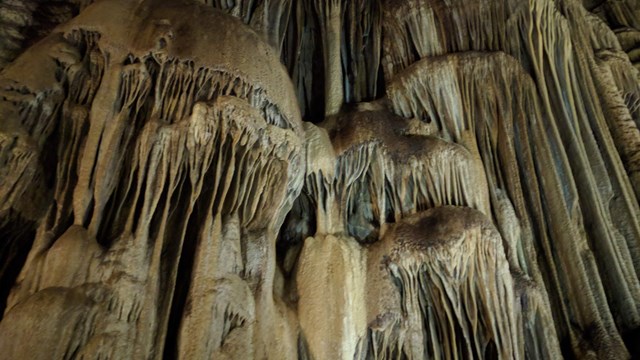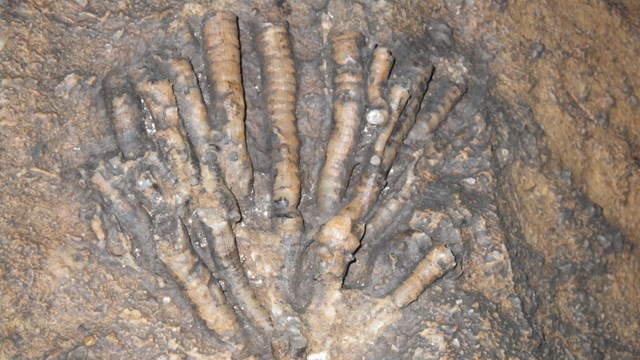
NPS Photo/ Jackie Wheet When you visit Mammoth Cave for the first time, you may find yourself marveling at its towering passageways, mountainous heaps of fallen rock, and its maze-like sprawl. But how did it all form? Solution CavesThere are many types of caves that form in different, incredible ways. Mammoth Cave, the world’s longest known cave, is a well researched example of a “solution cave.” 
NPS Photo How old is Mammoth Cave?Researchers have dated Mammoth Cave’s rock beds to the Mississippian Period. Types of PassagesMost of Mammoth Cave’s passages are dry, only occasionally letting water seep into specific areas where stalactites, stalagmites, and other formations can be found. Depending on what part of Mammoth Cave you visit, you may notice different types of cave passages that you travel through. Here are a few common passage types and the unique ways they formed. 
NPS Photo Canyon PassagesThese passages are formed by underground streams that follow the slightly tilted layers of limestone, eroding channels downward through the bedrock. These passages are usually taller than they are wide, and resemble canyons you might explore above ground, except that they have a cave ceiling over top! Some canyons can be quite tall as they have carried massive amounts of water throughout their formation. 
NPS Photo/ Jackie Wheet Large Canyon Composite PassagesLarge Canyon Composite cave passages form from several passages eroding together. They can be formed from the ceiling or floor of stacked tube passages breaking down and joining together to form a larger open passage with additional canyon components. Many of the upper tour routes in Mammoth Cave follow these large canyon composite cave passages. 
NPS Photo/ Thomas DiGiovannangelo Tube PassagesWhen you think of a tube passage, think of a pipe full of water. Tubes are wide, oval-shaped tunnels that formed while filled up completely with flowing water. In order to be full of water, these passages must form in lower levels of the cave, where the water table would have been found. When the water table drops, the older, higher placed tubes empty out and become dry, allowing new passages to form in lower levels of the cave. Today, active tubes form the underground springs that transport water from the lowest levels of the cave out to the Green River. Visitors can walk through tubes passages in places like Cleveland Avenue on the Grand Avenue or Accessible Tours or Gothic Avenue in the Historic section. 
NPS Photo/ Jackie Wheet Vertical ShaftsWhere limestone beds display vertical cracks through multiple layers of rock, the water flowing through the rock beds will obey gravity and flow straight down. Vertical shafts form when this happens. Vertical shafts are tall, narrow passageways that go straight down into the cave. In Mammoth Cave, vertical shafts can range in size from 30 feet to 200 feet tall. One particularly large vertical shaft can be seen on the Historic Tour. Know as “Mammoth Dome”, this vertical shaft is over 190 feet tall. 
NPS Photo/ David Kem Keyhole PassagesA keyhole passage has a shape like its name suggests: It has an oval top and then has a narrow passage extending down vertically from the oval. These passages are really just a combination of a tube passage and a canyon passage. They can tell you about changing water levels that occurred as the cave was forming. The tube at the top forms at or just below the water table, but when the water table lowers, the stream that was in the tube cuts a canyon in the floor as it goes down toward the new water level. Fat Man's Misery on the Historic Tour is an excellent example of a keyhole passage. 
Rocks of Mammoth Cave
Types of rock found at Mammoth Cave. 
Stalactites, Stalagmites, and Formations
Strange and one-of-a-kind formations. 
Karst Topography
Sinkholes, sinking streams, caves and more! 
Fossils
Life before the cave. |
Last updated: March 19, 2021
